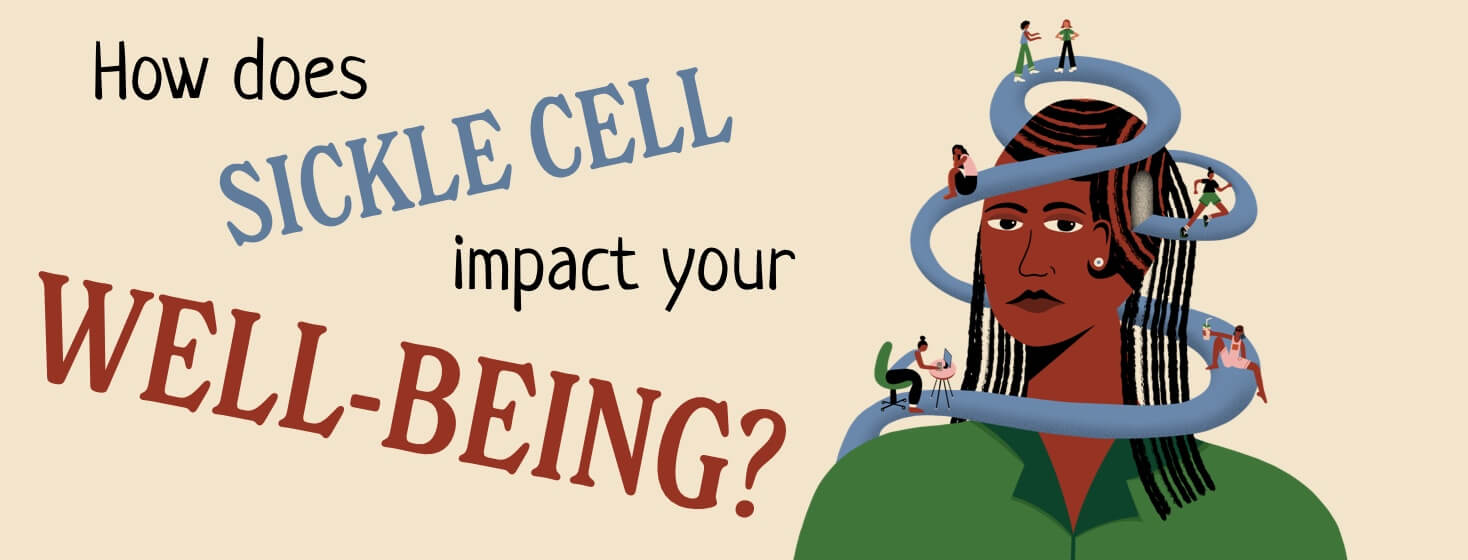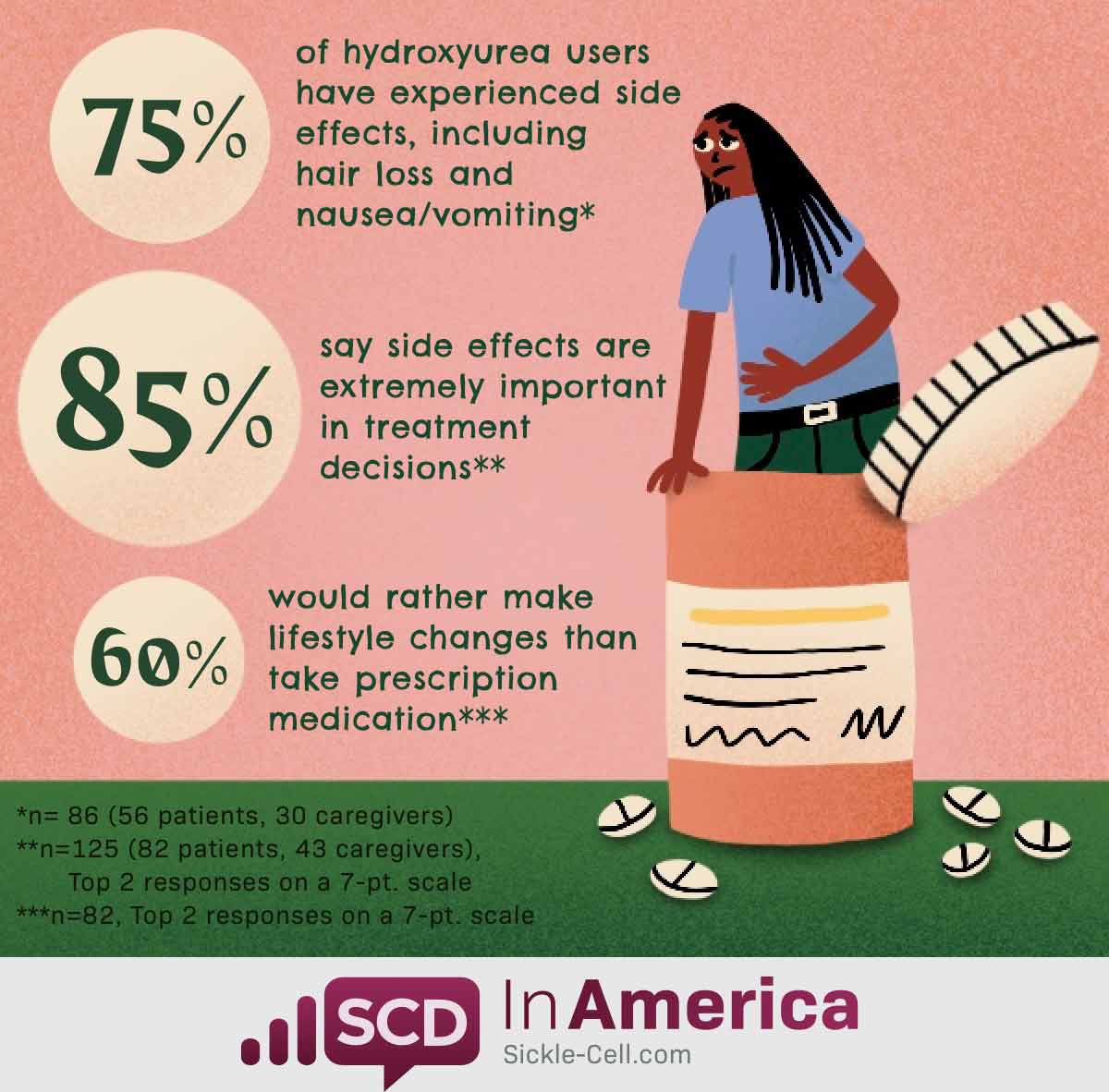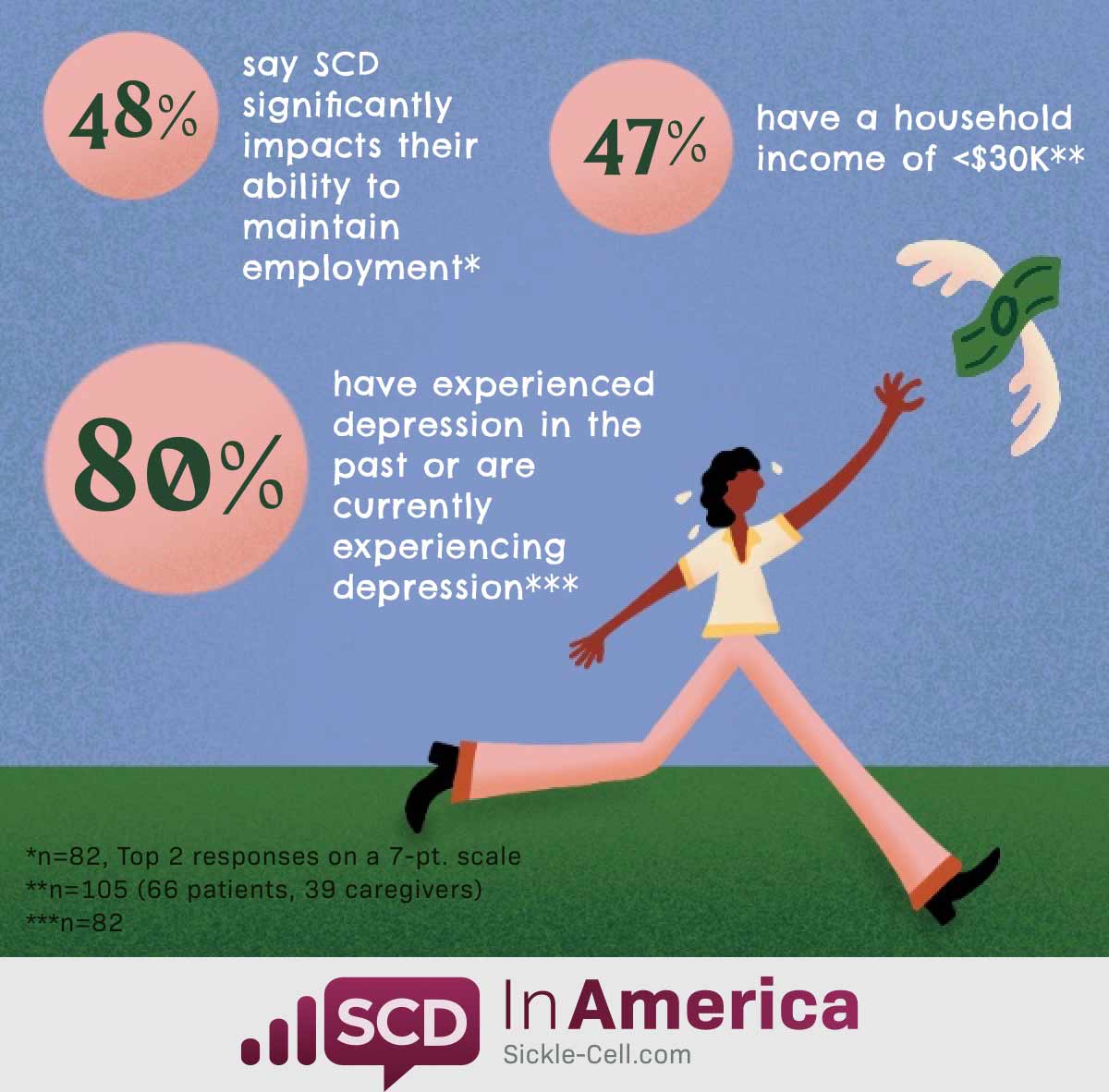In America: Results From Our 2nd Survey
In early 2022, we conducted our annual Sickle Cell In America Survey, where 125 Sickle-Cell.com community members in the United States shared their experiences on symptoms, pain management, and treatment options.
Out of all of the results, one insight really stood out: 56 percent of respondents cite that their overall quality of life is significantly impacted by sickle cell disease (SCD). From pain crises to side effects and stigma, daily life for those with sickle cell is harder than it is for most. Here, we’ll highlight some of the biggest challenges SCD warriors face.
Managing Pain
Living in pain can be exhausting, expensive, and interfere with daily activities. Spending time and money on self-care to manage symptoms is not possible for everyone. Furthermore, when community members seek care for pain crises, they often have to shoulder the stigma related to their disease.
Making Treatment Decisions
Limited options and prevalence of side effects make treatment decisions challenging for those living with SCD. Hydroxyurea continues to be the top treatment option among SCD survey respondents. While 7 in 10 current users are extremely satisfied with how easy it is to take and how affordable it is, hydroxyurea comes with worrying side effects. Other treatment options like blood transfusions and bone marrow transplants prove difficult for many community members to access due to cost and lack of donor matches.
Coping Day-to-Day
Living with SCD comes with an unpredictability that makes managing daily life more stressful. Respondents cite a significant impact on their overall quality of life, noting a particular effect on employment and mental health. Overwhelming fatigue, pain, and unplanned doctor and ER visits can interrupt life at a moment’s notice.
The numbers point to areas of potential improvement in care for SCD warriors: Quality of service in the ER and development of better treatment options, among others.
So, where do we start? Head to our forums to see what other community members are doing to increase awareness and advocate for better sickle cell care in their daily lives.
The 2nd Sickle Cell In America Survey was conducted online from January 2022 through April 2022. The survey was completed by 125 people (85 patients and 43 caregivers).

![Woman laying in hospital bed next to statistics: 86% have experienced a pain crisis in the past year and 72% had at least one ER/urgent care visit in the past year. Quote below woman stating: Many [healthcare providers] believe that I am visiting the hospital seeking drugs. They don’t believe that I’m in pain.](/wp-content/uploads/2022/07/SCD-IA2-infographic-01.jpg)


Join the conversation